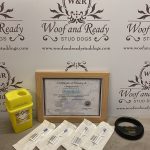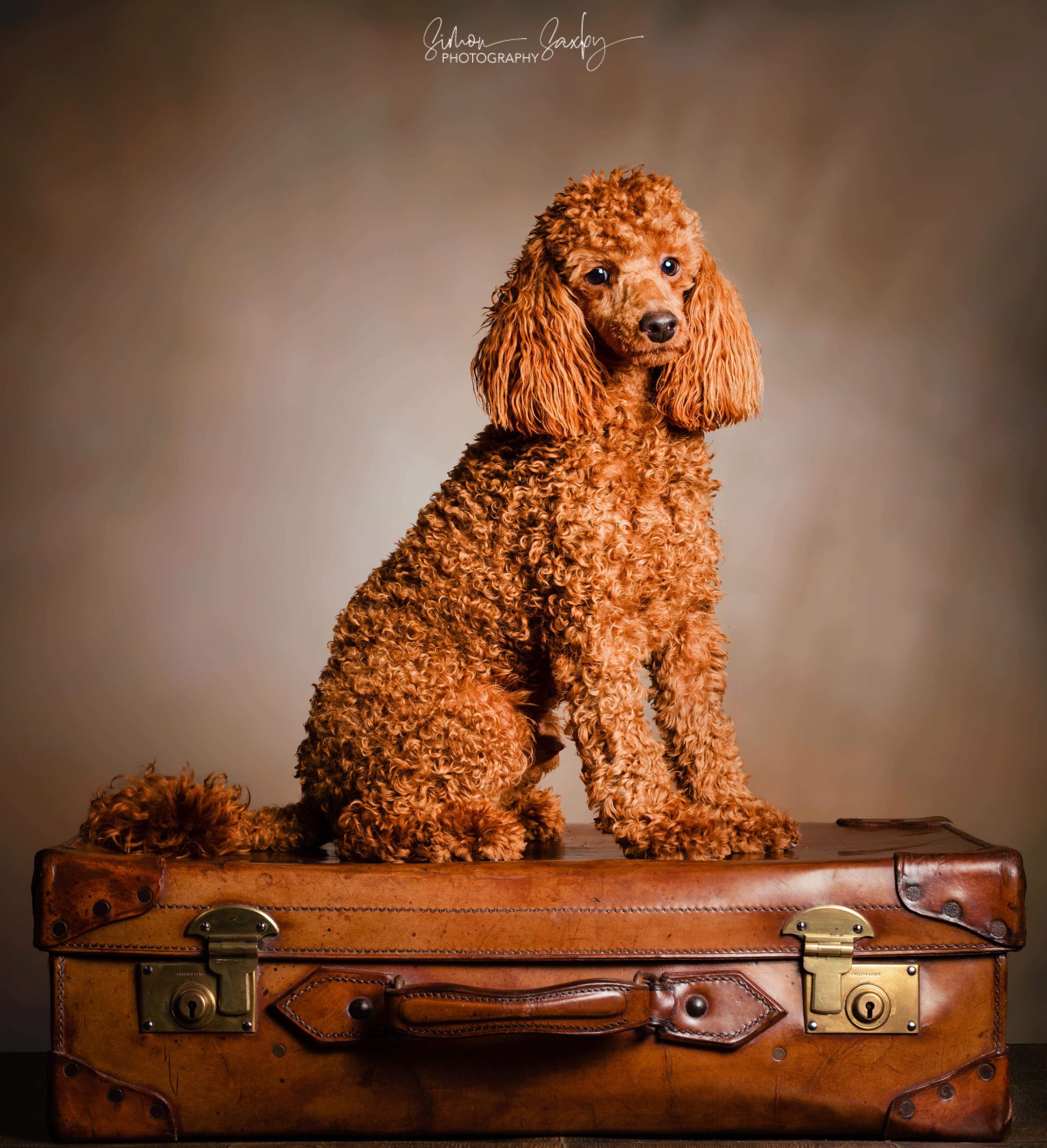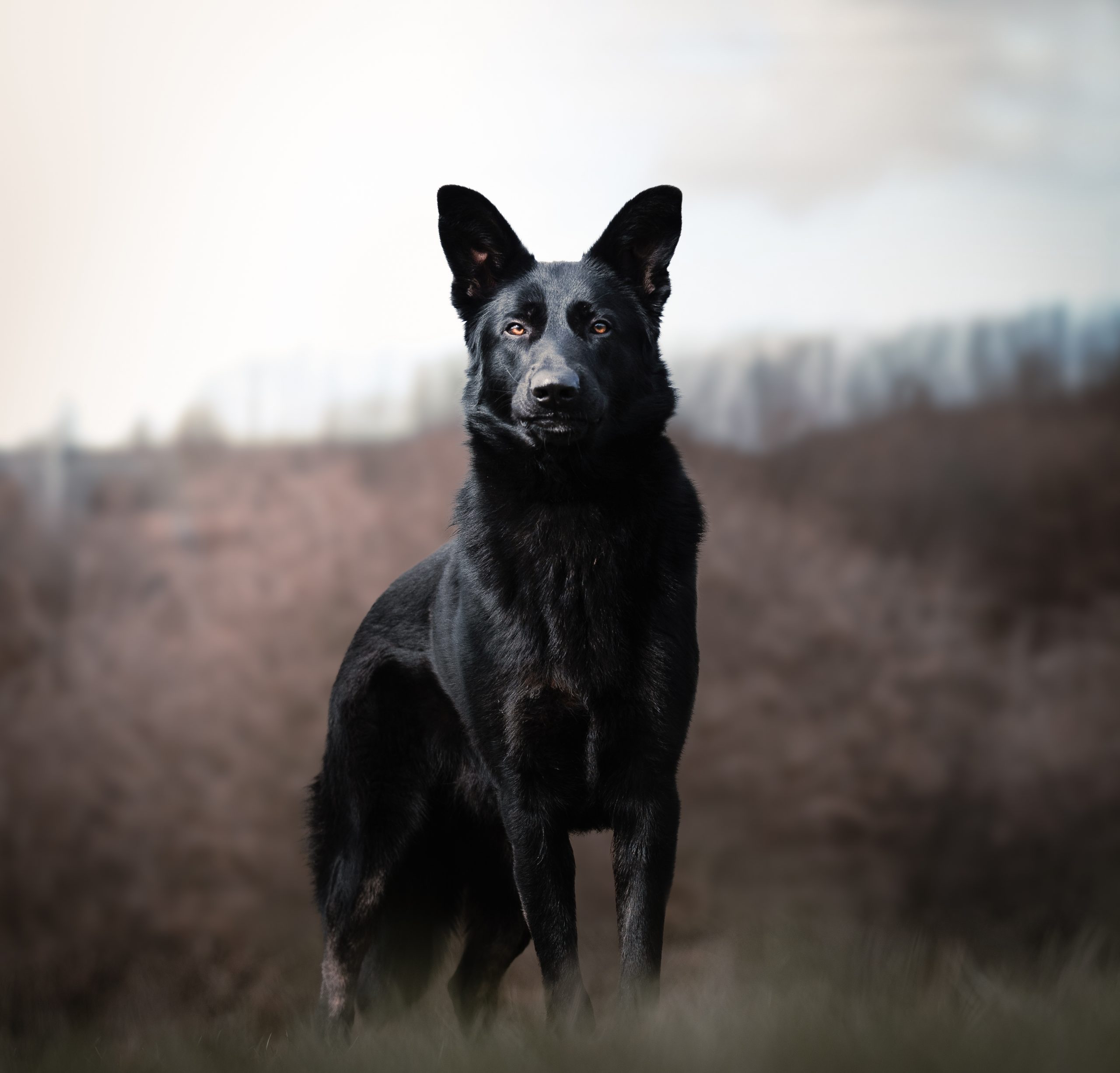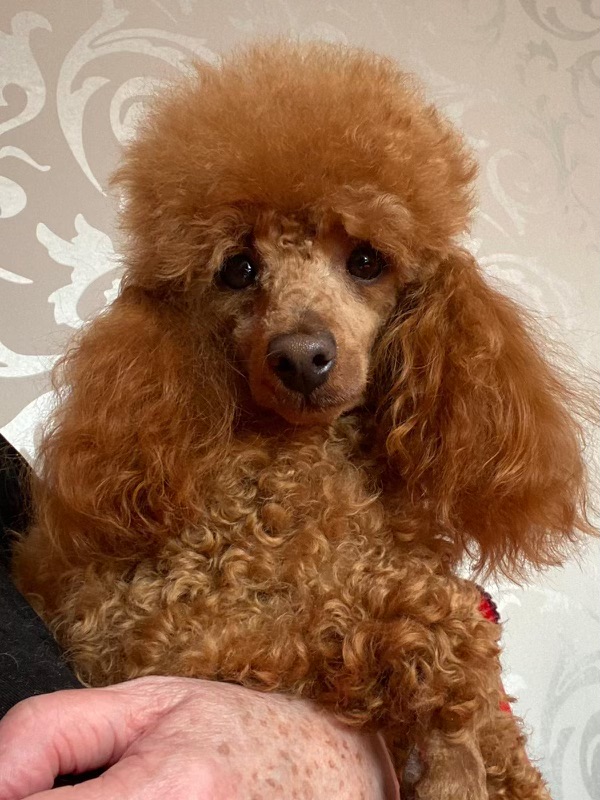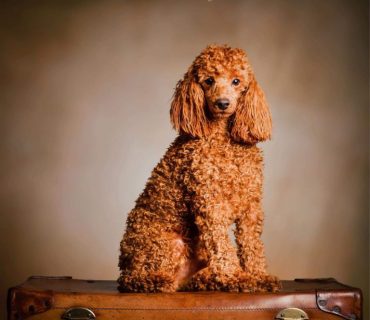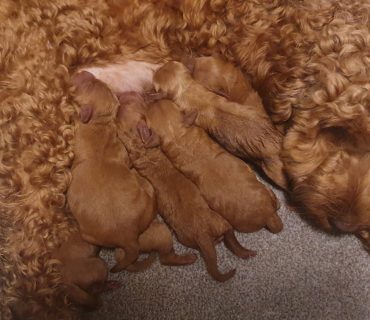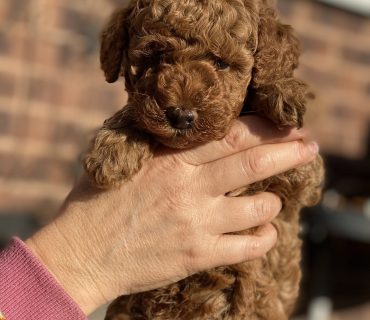As the end of your dog’s pregnancy approaches, you’ll notice a significant enlargement of her breasts and nipples, and might even detect some milky fluid as the milk glands develop and enlarge. Her abdomen will increase in size and may sway a little as she walks. At the very end of the pregnancy, you might even be able to see or feel the puppies moving around inside the mother.
By this time, you want to prepare yourself and your dog for whelping, or puppy birthing. The best way to do this is to set up a whelping box. Whelping boxes offer a safe, warm, draft-free, easily cleaned location for your dog to have her puppies. There are whelping boxes made that can be purchased. The whelping box should be easy for the mother, but not the puppies, to get in and out of. Your dog may prefer to have it in a quiet area of the house but in an area that you can have easy access.
Once you have purchased or built your whelping box, take some time to get your dog accustomed to it. We recommend your whelping box to have the following;
-
Have boards round the edges so your puppies can’t escape or get stuck in the bars
-
Have the water suspended off the floor so your bitch can drink but to avoid the puppies drowning.
-
Anti-roll bars round the edge of the pen, this will help to avoid your bitch crushing any puppies against the edge side of the pen (Take these out when the puppies are 2 weeks old).
-
Heavy carpet laid flat on the bottom of the whelping box, this will avoid your bitch being able to lift the carpet up whilst giving birth as they scratch the floor a lot to get comfy, this will avoid suffocating the puppies.
If this is your first time breeding your dog, talk to your veterinarian about your role during labor, and read and learn what you need to know. Unless you plan to have an experienced breeder on hand, you will need to be prepared to step in when necessary during the whelping process. It’s always a good idea to have another person there with you to help keep the puppies warm or to assist if you need help.
Whelping Supply Checklist:
-
Dry, clean towels to clean the puppies
-
Paper towels / kitchen roll & antibacterial spray to help with clean up
-
Thermometer to check your dog’s temperature before whelping
-
Clean, sterilized scissors to cut the umbilical cords
-
Unwaxed dental floss to tie off the umbilical cords
-
Iodine to clean the puppies’ abdomens after the cord is cut and dab on the end of the cut umbilical cord
-
Heat lamp set high above the box on one corner only to allow the puppies to crawl to a cooler spot in a box or hot water bottle to keep the puppies warm (be careful it isn’t too hot).
-
Bulb syringe to clean puppies’ nose and mouth
-
A baby scale in ounces
-
Puppystim Drops
-
Puppy milk and Syringe
-
Veterinarian’s phone number and the number of a nearby emergency clinic
Whelping
When your pregnant dog’s time approaches, watch out for the warning signs of labor. Pregnant mothers may stop eating a few days before whelping and may also start trying to build a “nest” — hopefully in the whelping box.
Many pregnant dogs close to delivery start to pant heavily. A drop in rectal temperature usually precedes delivery by about 8-to-24 hours from a normal temperature (100-to-102.5 degrees Fahrenheit) to 99 degrees or even lower. Many bitches ready to whelp may not eat or eat very little.
Abdominal contractions may begin slowly and gain strength and frequency – sometimes they’re strongest for the first delivery accompanied by straining and moaning. You may see the water sac come out when there’s a puppy in the birth canal, and within one hour the first puppy should be delivered.
Each puppy is born enclosed in its placental membrane and in each case, the mother licks the puppy vigorously and tears this membrane off, sometimes eating it. If she does not remove it, you will have to do it, as puppies cannot survive for more than a few minutes before their supply of oxygen runs out. You may need to rub the puppy with a clean towel until you hear him / her cry.
The bitch should also sever the umbilical cord as she cleans her pups. If she does not, it is up to you to snip the cord and tie it off about one inch from the belly with some unwaxed dental floss. You should wipe the abdomen of all of the puppies with iodine to prevent infection.
Some dogs deliver their puppies one right after another, but others may deliver a few puppies, and then rest before delivering more. If there’s a break of more than 4 hours, you’ll want to call your veterinarian. You must also keep track of the number of placentas. A retained placenta can cause problems for the mother. Generally, the entire duration in hours of a normal whelping is about equal to the number of puppies in utero. So, a litter of 6 should normally take about 6 hours total.
Don’t forget to offer the mother water to drink and to take her outside to relieve herself if she is in the middle of having a large litter. She’ll often need to urinate. Bring along extra towels and don’t leave her unsupervised as sometimes they can pass a puppy while they are outside! During this time, the puppies should be kept warm in their whelping box. You must make sure the puppies do not become cold and are warm at all times with no chill or draft.
All of the puppies should be placed along the mother’s belly, and you should watch to be sure she lets them all nurse within a few hours. Keep an eye on the pups to make sure they are all breathing normally and nursing.
Possible Dog Labor Complications
Sometimes during delivery, things go wrong. If you experience any of these signs, call your veterinarian:
-
Your dog’s rectal temperature dropped more than 24 hours ago and labor isn’t starting.
-
The mother is exhibiting symptoms of severe discomfort, or if she doesn’t deliver the first puppy 2 hours after contractions begin especially if she has passed green discharge.
-
More than 3 hours pass in between the delivery of puppies, or your dog experiences strong contractions for an hour without a birth or if the mother seems exhausted.
-
Trembling, collapsing, or shivering are warning signs of serious complications that could put both the bitch and the puppies at risk.
-
It’s normal for dogs to deliver a dark green or bloody fluid after the first puppy, but if this happens before the first puppy, call the vet.
-
Your dog shows no signs of whelping 64 days after her last mating.
-
All of the placentas aren’t delivered.
-
Puppies aren’t nursing.



